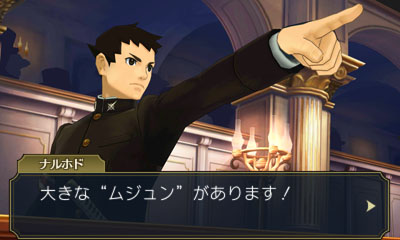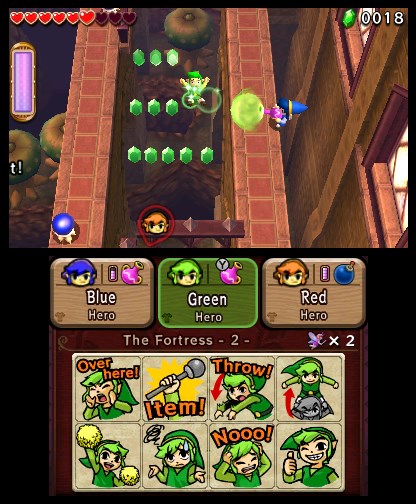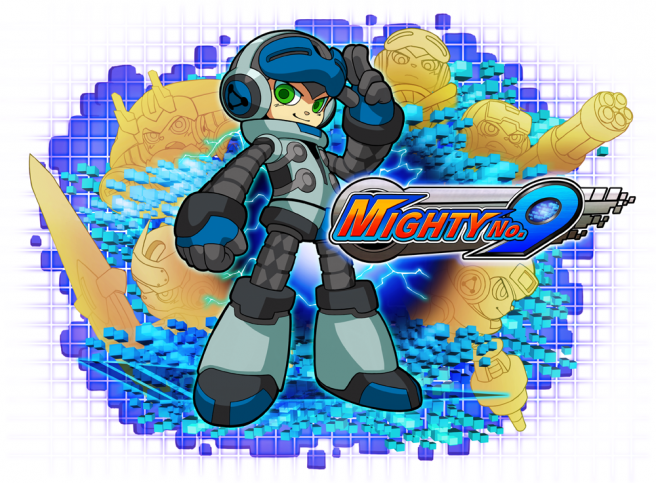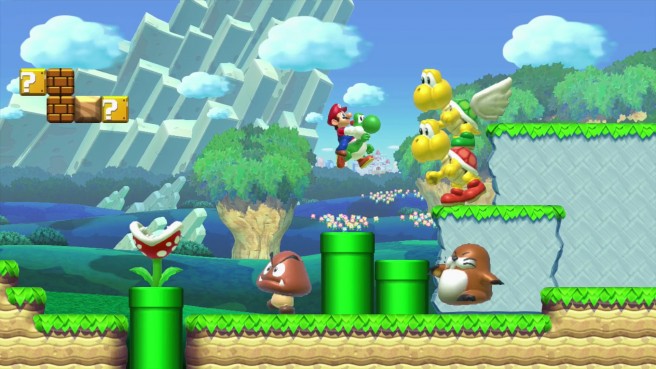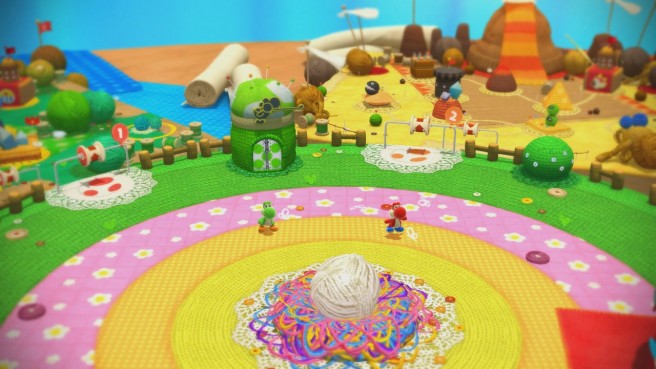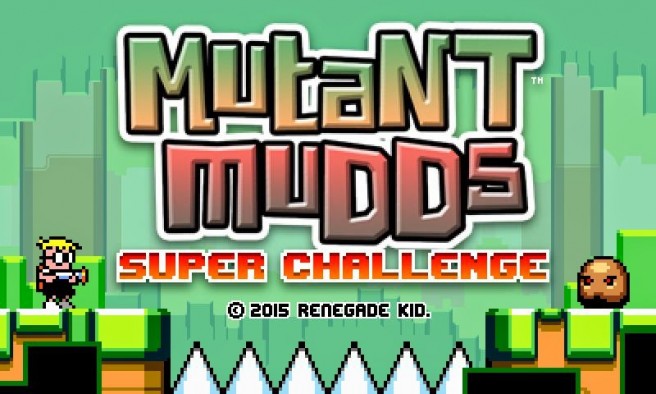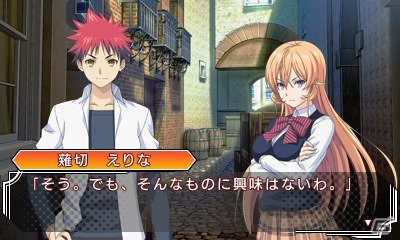Latest episode of Capcom TV featuring The Great Ace Attorney
Posted on 10 years ago by Brian(@NE_Brian) in 3DS, Videos | 0 comments
More: Capcom, Japan, The Great Ace Attorney
Another couple of Zelda: Tri Force Heroes videos
Posted on 10 years ago by Brian(@NE_Brian) in 3DS, Videos | 2 Comments
Mighty No. 9 – city level gameplay (off-screen)
Posted on 10 years ago by Brian(@NE_Brian) in 3DS, Videos, Wii U | 0 comments
More: Comcept, Deep Silver, Inti Creates, Mighty No. 9
Super Mario Maker – Monty’s Mine Go Boom direct feed gameplay
Posted on 10 years ago by Brian(@NE_Brian) in Videos, Wii U | 0 comments
More: Super Mario Maker
Nintendo Download (6/18/15, North America) – Fire Emblem: The Sacred Stones, Comic Workshop 2, more
Posted on 10 years ago by Brian(@NE_Brian) in 3DS eShop, News, Wii U eShop | 0 comments
This week’s North American Nintendo Downloads are as follows:
Wii U Download
Life Of Pixel – ?
Fat City – $12.99
Solitaire Dungeon Escape – $4.99
Wii U Virtual Console
Fire Emblem: The Sacred Stones – $7.99
EarthBound Beginnings – $6.99
3DS Download
Comic Workshop 2 – $9.99
Best of Board Games – Chess – $9.99
Smash Controller – $0.99
Wii U/3DS DLC
Super Smash Bros. – New content approaching! Ryu from the Street Fighter series and Roy from Fire Emblem join Lucas from Mother 3 as new playable fighters, and are available for download now. In addition, there are three new stages and many new costumes for Mii Fighters, including outfits from classic fighting series Virtua Fighter and Tekken. Learn more: http://www.smashbros.com/US/.
3DS DLC
Harvest Moon: The Lost Valley
eShop Sales
Wii U/3DS
– Nintendo is celebrating its lineup at E3 2015 with up to 30 percent off select games for Wii U and Nintendo 3DS. Fans can score deals on games related to some of the top franchises being featured at the show, including Super Mario Bros., The Legend of Zelda, LEGO, Just Dance and Yoshi. See all the games on the sale page. This offer runs until June 23 at 8:59 a.m. PT.
– Pure Chess (Wii U and Nintendo 3DS) is 50 percent off (reduced from $7.99 to $3.99) until 8:59 a.m. PT on June 22.
– Another World – 20th Anniversary Edition on Wii U and Nintendo 3DS is 60 percent off (reduced from $7.99 to $3.20) beginning at 9 a.m. PT on June 20 until 8:59 a.m. PT on June 27.
Wii U
– Knytt Underground and Stick it to the Man! from Ripstone are on sale until 8:59 a.m. PT on June 22.
– psyscrolr is 30 percent off (reduced from $3.99 to $2.79) until 8:59 a.m. PT on June 23.
– Arrow Time U is 50 percent off (reduced from $1.99 to $0.99) until 8:59 a.m. PT on July 2.
– Paper Monsters Recut is 25 percent off (reduced from $7.99 to $5.99) until 8:59 a.m. PT on July 2.
– Tilelicious is 33 percent off (reduced from $5.99 to $3.99) until 8:59 a.m. PT on July 2.
– Gravity Badgers is 50 percent off (reduced from $4.99 to $2.49) until 8:59 a.m. PT on July 16.
3DS
– Shin Megami Tensei: Devil Survivor Overclocked and Shin Megami Tensei IV from ATLUS are on sale beginning at 9 a.m. PT on June 22 until 8:59 a.m. PT on June 29.
– Tiny Games – Knights & Dragons is 33 percent off (reduced from $2.99 to $1.99) until 8:59 a.m. PT until 8:59 a.m. PT on July 2.
-Swords & Soldiers 3D, Glory of Generals and Quell Reflect from Circle Entertainment are on sale until 8:59 a.m. PT on July 9.
– Cubit the Hardcore Platformer Robot is 33 percent off (reduced from $2.99 to $1.99) until 8:59 a.m. PT on July 16.
– PIX3D, League of Heroes and more games from Huuuge Games are on sale until 8:59 a.m. PT on July 16.
Zombie Incident is 25 percent off (reduced from $1.99 to $1.49) until 8:59 a.m. PT on July 16.
Nindies @ Home
Nindies@Home – Be among the first to play upcoming indie games coming to Wii U later this year. From now until June 22 at 8:59 a.m. PT, if you play select free demos in the Nintendo eShop on Wii U, you’ll receive 15 percent off the purchase of those games at launch. See all the included games on the offers page.
Activities
Code Name: S.T.E.A.M. “Global Cup” Tournament – See how your Code Name: S.T.E.A.M. squad stacks up online in Nintendo’s Public Tournaments. Top players earn unique titles that are visible online and earn major bragging rights with their friends and around the world. The new “Global Cup” tournament runs from June 18 to June 24. Opt in via the SpotPass feature for notifications on future tournaments, and click here for more information about multiplayer tournaments. Good luck, agents!
Source: Nintendo PR
More: Nintendo Download, top, Virtual Console
More off-screen videos for various games
Posted on 10 years ago by Brian(@NE_Brian) in 3DS, Videos, Wii U | 0 comments
Yoshi’s Woolly World footage (GameSpot stage demo)
Posted on 10 years ago by Brian(@NE_Brian) in Videos, Wii U | 0 comments
More: Good Feel, Yoshi's Woolly World
European Art Academy: Home Studio trailer
Posted on 10 years ago by Brian(@NE_Brian) in Videos, Wii U eShop | 2 Comments
More: Art Academy: Home Studio
Mutant Mudds Super Challenge details
Posted on 10 years ago by Brian(@NE_Brian) in 3DS eShop, News, Wii U eShop | 2 Comments
– After gathering absolutely everything in the first game, Max says he’s going to go off on his own to investigate some “new intel”
– His new quest brings him to a brand new hub world
– Hub is more open than the first game
– Diamonds you collect in each level as you progress to the end are much more cleverly hidden
– Improved presentation
– The game’s 3D now places Max behind clouds in the game’s sky levels instead of simply placing him on the foreground
– Various themes for level designs
– One design is a mirrored reflection of itself that has you approach it from both the left and right sides
– Every third level in the game is a ghost level
– One boss in the game is a ghost with other enemies around
– Can only harm the ghost with a ghost shot item limited to only ten uses
Food Wars: Shokugeki no Soma: The Dish of Friendship and Bonds details
Posted on 10 years ago by Brian(@NE_Brian) in 3DS, News | 0 comments
– Original story
– Set in Europe
– Will see characters from the series interact amongst each other
– Different situational events
– Takumi Aldini, Erina Nakiri, and the others from Tootsuki Academy are in the game
– See events from the original story unfold
– Characters will be voiced by their respective voice actors from the anime
